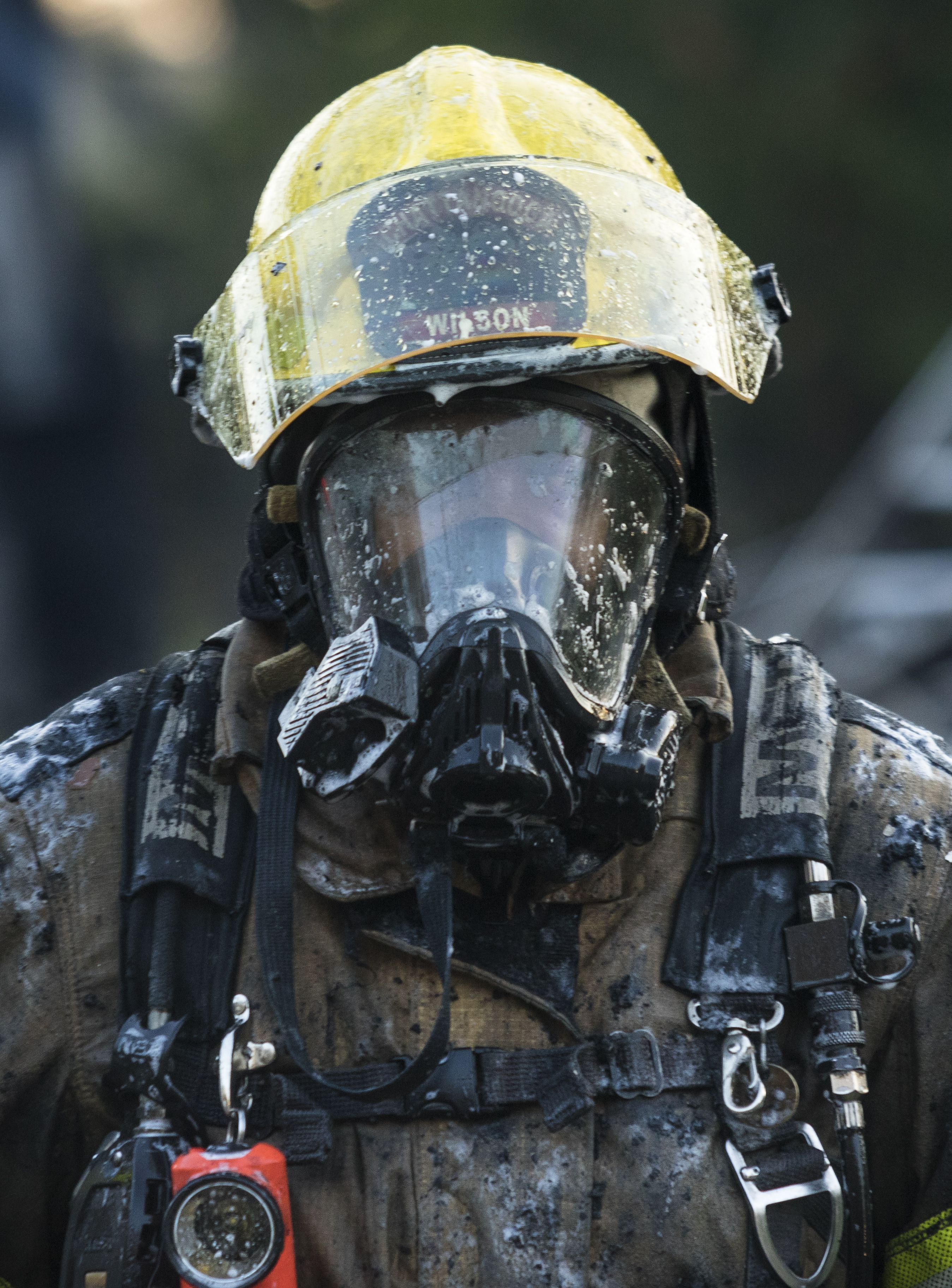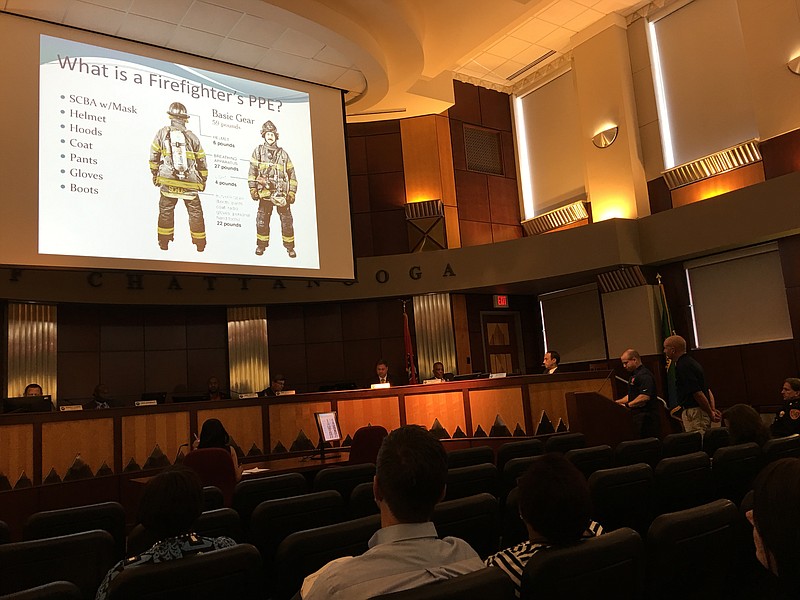 Chattanooga firefighter Glenda Wilson walks away from the scene of a morning house fire at 4218 Fagan Street to remove her turnout gear on Friday, Oct. 28, 2016, in Chattanooga, Tenn. The house was reportedly unoccupied, according to Chattanooga Fire Department spokesperson Bruce Garner, and it took firefighters more than half an hour to control the blaze.
Chattanooga firefighter Glenda Wilson walks away from the scene of a morning house fire at 4218 Fagan Street to remove her turnout gear on Friday, Oct. 28, 2016, in Chattanooga, Tenn. The house was reportedly unoccupied, according to Chattanooga Fire Department spokesperson Bruce Garner, and it took firefighters more than half an hour to control the blaze.Chattanooga firefighters say a simple change of heavy protective gear can improve their odds at beating cancer- causing threats such as soot and asbestos.
To that end, the Chattanooga Fire Department hopes to provide a second set of turnout gear for its firefighters over a three-year period. If the mayor's office approves the recommendation, it will be in the fiscal 2018 budget proposal that will be presented to the Chattanooga City Council in August.
Fire department officials recently spoke to council members about how wearing dirty and wet gear can increase the risks of absorbing carcinogenic contaminants.
"The gear is heavy, it is cumbersome," said Jack Thompson, president of Chattanooga Fire Fighters Association Local 820. "It also does the one thing that it is designed to, [which] is protect us from heat. In doing that, our core temperature rises. As our core temperature rises, we start to pull in these cancers a lot faster. Think of a sponge."
The skin's permeability rises 400 percent with every 5-degree increase in temperature, Thompson said.
"Firefighters are twice as likely to get testicular cancer than males in the general population [and] also roughly 50 percent more likely to develop melanoma and non- Hodgkins lymphoma," Thompson said. "The biggest thing is the 229 percent greater risk for mesothelioma [a cancer of the lungs, abdomen or heart] from asbestos exposures."
Other increased risks for firefighters include breast, brain, skin, lung and prostate cancers, according to the presentation.
Battalion Chief Rick Boatwright, a burn coordinator for the 14th district of the International Association of Fire Fighters, discussed a study in which firefighters were exposed to nontoxic particulates during "rigorous" tests to show how soot and other contaminants get inside the gear and seep into the skin.
He showed pictures of a test subject with large patches of the particulates, showing up blue under a black light, on his neck, waist and wrists.
The study shows that "though we wear the stuff correctly, we're still getting contaminated," Boatwright said.
The pair also showed slides of a Chattanooga firefighter who suffered steam burns after he got sweaty during a school demonstration and later had to respond to a fire. The man's skin had come off his fingertips and ulcers covered his arms. Boatwright said the gear was in perfect working order.
"A second set [of turnout gear] will prevent these types of injuries," Boatwright said.
The additional gear will extend the working life of protective equipment by reducing continual wear and tear, he said. Right now, a Chattanooga firefighter's turnout gear lasts between three and five years. That figure could double, based on reports from fire departments that issue two sets of gear to their personnel.
It will cost about $1.4 million to outfit the entire department of 450 firefighters "head to toe," Boatwright said.
Thompson said the plan calls for outfitting 150 personnel next year, enough for 10 stations.
Chattanooga Fire Chief Chris Adams said in an email the department also is working to get new helmets and leather boots, which have shown to reduce strains and sprains.
"It really is inconceivable to me that our firefighters don't necessarily have all the gear [they need]," Council Vice Chairman Ken Smith said.
Councilwoman Carol Berz asked City Attorney Wade Hinton if the city was negligent if it did not provide the "appropriate gear" in light of the new information.
"What we have to look at is what's reasonable, based on our resources at the time," Hinton said. "So I think I have to have a lot more information before I make that call."
"What's reasonable, like do we have enough money to save a life?" Berz asked.
Contact staff writer Paul Leach at 423-757-6481 or pleach@timesfreepress.com. Follow him on Twitter @pleach_tfp.
